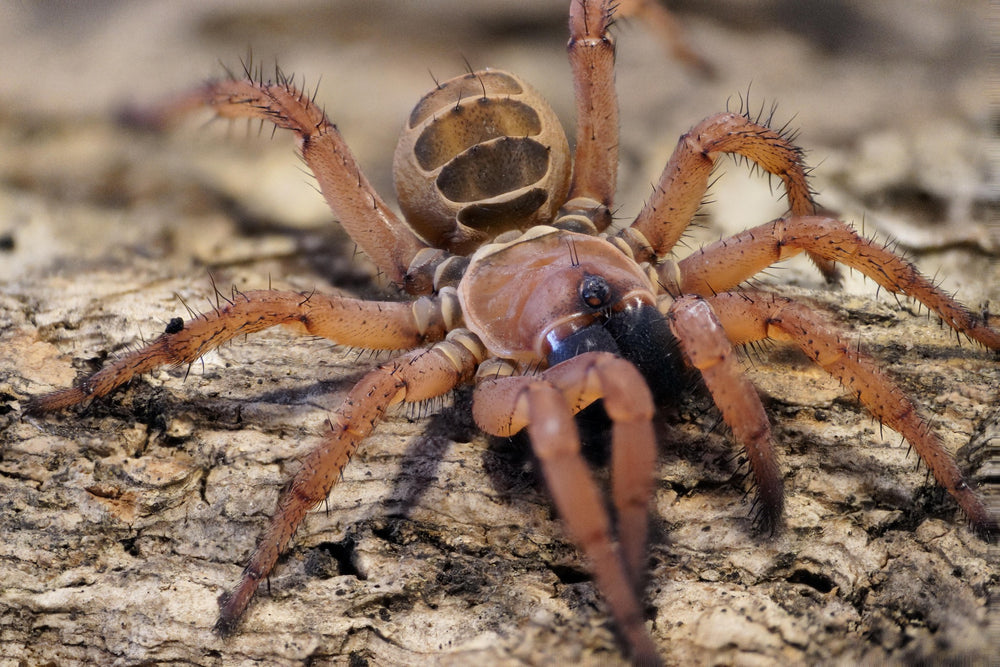
Grammostola pulchripes (Chaco Golden-Knee) 3" FEMALE | MATURE MALE
- Live Arrival Guarantee
- Live Animals Ship FedEx Priority Overnight (Mon-Weds)
- In stock, ready to ship
- Inventory on the way
Are you looking for a large, beautifully-colored tarantula with a good disposition for handling and spends time in the open? If so, the Chaco Golden Knee, Grammostola pulchripes Simon has you covered. Formerly known as G. aureostriata, the species epithet pulchripes derives from "pulchra,” Latin for beautiful or pretty, and "-pes" meaning legs or feet. While perhaps not the most polite description, “Pretty legs” is apt for the Chaco Golden Knee. The common name credits the golden skeletal stripes that almost appear brush-stroked down the velvet black patella (the golden “knees”) through the metatarsus of each leg. The light setae lining the legs and abdomen also give this tarantula a lovely cactus-like appearance at maturity.
These New World tarantulas range through Paraguay and Argentina, building their webs under brush and rocks in dry grasslands. Similarly to other Grammostola, G. pulchripes have strong appetites but grow slowly and steadily. They start life with an orange-brown carapace and legs with a dark gray abdomen as spiderlings and eventually transform into their adult coloration over three or so years. Although G. pulchripes are said to attain 8” in diagonal leg span, most females mature at approximately 6.5” legspan.
It is most important to ensure the enclosure of G. pulchripes be well-aerated, with cross ventilation. Spiderlings live a fossorial existence and readily burrow, so should be provided ample well-aerated substrate that is maintained as only slightly moist. Larger juveniles and mature specimens are not inclined to burrow and should be maintained in a well-aerated, cross-ventilated cage with more horizontal than vertical space. A substrate layer several inches thick that is kept bone dry but with periodic mistings in one cage corner works well. Mature Grammostola strongly prefer move-in-ready shelters and seldom burrow in captivity, so provide them with a shelter to build their silk hub in, such as a cork half slab.
G. pulchripes are quite docile and even reluctant to flick urticating hairs, so this is a great species for handling. As a bonus, Chaco Golden Knees are readily out and about, so is a great display tarantula as well. P. pulchripes has it all- beauty, great personality, and ease of care- not much more you can ask when looking for a fantastic tarantula!
References
https://www.thetarantulacollective.com/caresheets/grammostola-pulchripes

Info on our shipping policy can be found on our T&C page.



